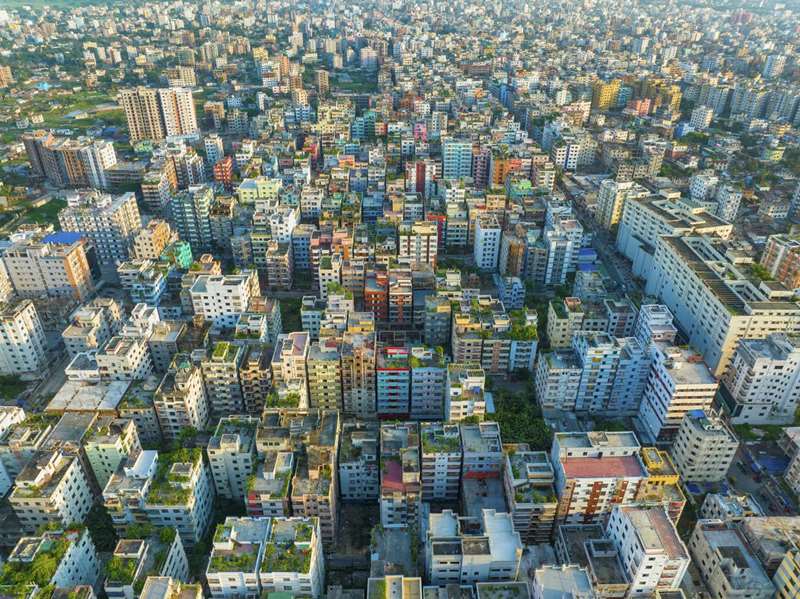Most of the buildings in Dhaka City are illegal

Dhaka, the bustling capital of Bangladesh
Dhaka, the bustling capital of Bangladesh, is grappling with significant challenges in building regulation and urban planning. A recent revelation indicates that a staggering 74 percent of buildings within the megacity are illegal constructions, posing grave risks to public safety and urban resilience. In response to this alarming reality, the Rajdhani Unnayan Kartripakkha (Rajuk) aims to initiate comprehensive reform measures to rectify this situation and enforce stricter building regulations.
Current Situation
The urban landscape of Dhaka reflects a stark reality where only 26 percent of buildings adhere to prescribed regulations, while the majority face issues of non-compliance and structural vulnerabilities. The proliferation of illegal constructions has become commonplace, with residential areas transforming into commercial hubs and the mixing of different land uses becoming rampant. This unplanned urbanization poses serious threats to public safety, as evidenced by tragic incidents like Nimtoli, FR Tower, Churihatta, and Bailey Road.
Rajuk's Reform Agenda
Recognizing the urgent need for intervention, Rajuk has devised a multifaceted strategy to address the proliferation of illegal constructions and ensure compliance with building regulations. The key components of this reform agenda include-
Comprehensive Survey: Rajuk aims to conduct a comprehensive survey of all buildings within Dhaka, involving a third-party assessment to accurately assess the extent of non-compliance and structural risks. This initiative seeks to identify high-risk buildings for immediate demolition and provide an opportunity for others to rectify their status.
Enforcement Measures: Building upon the survey findings, Rajuk plans to enforce strict regulatory measures to ensure compliance with building codes, particularly focusing on fire safety and earthquake resistance. Buildings identified as high-risk will undergo phased demolition, while others will be given the opportunity to revise their designs to meet regulatory standards.
Regional Planning: In tandem with enforcement measures, Rajuk intends to develop a detailed regional plan to guide future urban development in Dhaka. This comprehensive planning framework aims to foster sustainable growth, mitigate risks, and promote orderly development within the city.
Challenges and Way Forward
While Rajuk's reform efforts are commendable, they face several challenges, including bureaucratic hurdles, corruption, and the need for effective implementation. Urbanists emphasize the importance of not only planning but also robust enforcement mechanisms to ensure compliance and safeguard public interest. Transparency, accountability, and stakeholder engagement are critical for the success of these reform initiatives.
Dhaka's building regulation challenges underscore the pressing need for concerted efforts to address illegal constructions and promote sustainable urban development. Rajuk's reform agenda represents a step in the right direction, aiming to rectify past deficiencies and create a safer, more resilient urban environment. However, sustained commitment, collaboration, and oversight are essential to overcome existing challenges and realize the vision of a well-planned and regulated city.










পাঠকের মন্তব্য